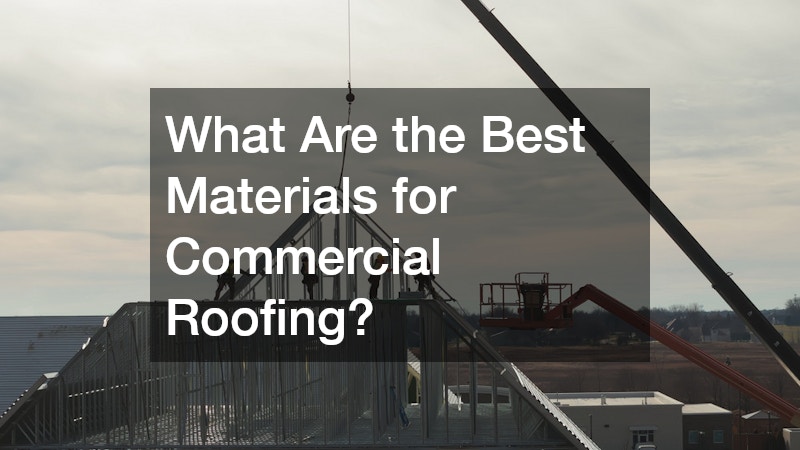
When it comes to commercial roofing, selecting the right materials is crucial for longevity, durability, and cost-effectiveness. Unlike residential roofs, which often prioritize aesthetics, commercial roofs must meet stricter requirements in terms of functionality and performance. This article explores some of the best materials for commercial roofing, providing a detailed look into each option's benefits, drawbacks, and ideal use cases.
Video Source
Metal roofing is a popular choice for commercial buildings due to its durability and long lifespan. Available in a variety of metals such as aluminum, copper, and steel, metal roofs can last anywhere from 40 to 70 years. The reflective surface of metal roofs also offers energy efficiency by reducing cooling costs, which is a significant advantage for large commercial facilities. Moreover, metal roofs are highly resistant to harsh weather conditions, including heavy rain, hail, and strong winds, making them ideal for regions prone to severe weather. Despite their higher upfront cost, the long-term savings on energy and maintenance can offset the initial investment.
One of the main benefits of metal roofing is its fire-resistant properties, which provide an additional layer of safety and protection for commercial buildings. The installation process is relatively quick, reducing labor costs and minimizing disruption to business operations. Metal roofing also supports sustainable building practices, as many metal panels are made from recycled materials and are fully recyclable at the end of their life cycle. However, potential drawbacks include noise during rain or hailstorms and the need for professional installation to avoid future issues. Nevertheless, the versatility and longevity of metal roofing make it a top contender for commercial properties.
Modified bitumen roofing is a type of asphalt product that has become increasingly popular in commercial applications for its strength and durability. This material consists of five layers, making it highly resistant to tearing and able to withstand foot traffic. Modified bitumen is also known for its excellent waterproofing properties, making it suitable for flat or low-slope roofs in commercial buildings. The installation process involves tearing down the layers, creating a seamless and watertight seal. One of the significant advantages of modified bitumen roofing is its cost-effectiveness, offering a balance of performance and affordability.
Moreover, the adaptability of modified bitumen is enhanced with the addition of modifiers such as atactic polypropylene (APP) or styrene-butadiene-styrene (SBS), which improve elasticity and strength. This adaptability allows commercial properties to benefit from enhanced resistance to temperature fluctuations, UV radiation, and chemical exposure. Additionally, modified bitumen roofs typically require low maintenance, reducing long-term upkeep costs for building owners. However, potential downsides include its susceptibility to punctures and the complexity of the installation process, which requires skilled professionals. Despite these challenges, the material’s reliability and performance keep it on the list of top choices for commercial roofing.
Thermoplastic roofing is a category that includes materials like Thermoplastic Polyolefin (TPO) and Polyvinyl Chloride (PVC), both of which are celebrated for their energy efficiency and durability. Popular in commercial settings, these materials are installed as single-ply membrane systems, providing a lightweight yet robust roofing solution. TPO and PVC roofs are known for their resistance to UV radiation, chemical exposure, and bacterial growth, making them suitable for various environmental conditions. Additionally, the reflective nature of these materials can significantly reduce energy costs by keeping roofs cool and lowering air conditioning demands. Despite the benefits, selecting the right contractor is crucial to avoid common installation issues that can compromise the roof's longevity.
An additional benefit of thermoplastic roofing is the ease of repair and maintenance, which can extend the material's lifespan and reduce overall costs. Routine inspections help identify potential issues such as punctures or seam problems before they escalate into costly repairs. Given their resistance to wear and tear, TPO and PVC roofs are particularly advantageous for buildings that experience high foot traffic or require installations like HVAC systems on the rooftop. Despite initial installation costs potentially being higher than other types, the long-term savings in energy efficiency and low maintenance requirements often make it a worthwhile investment. Overall, the performance characteristics of thermoplastic roofing materials make them a strong contender for any commercial roof project.
